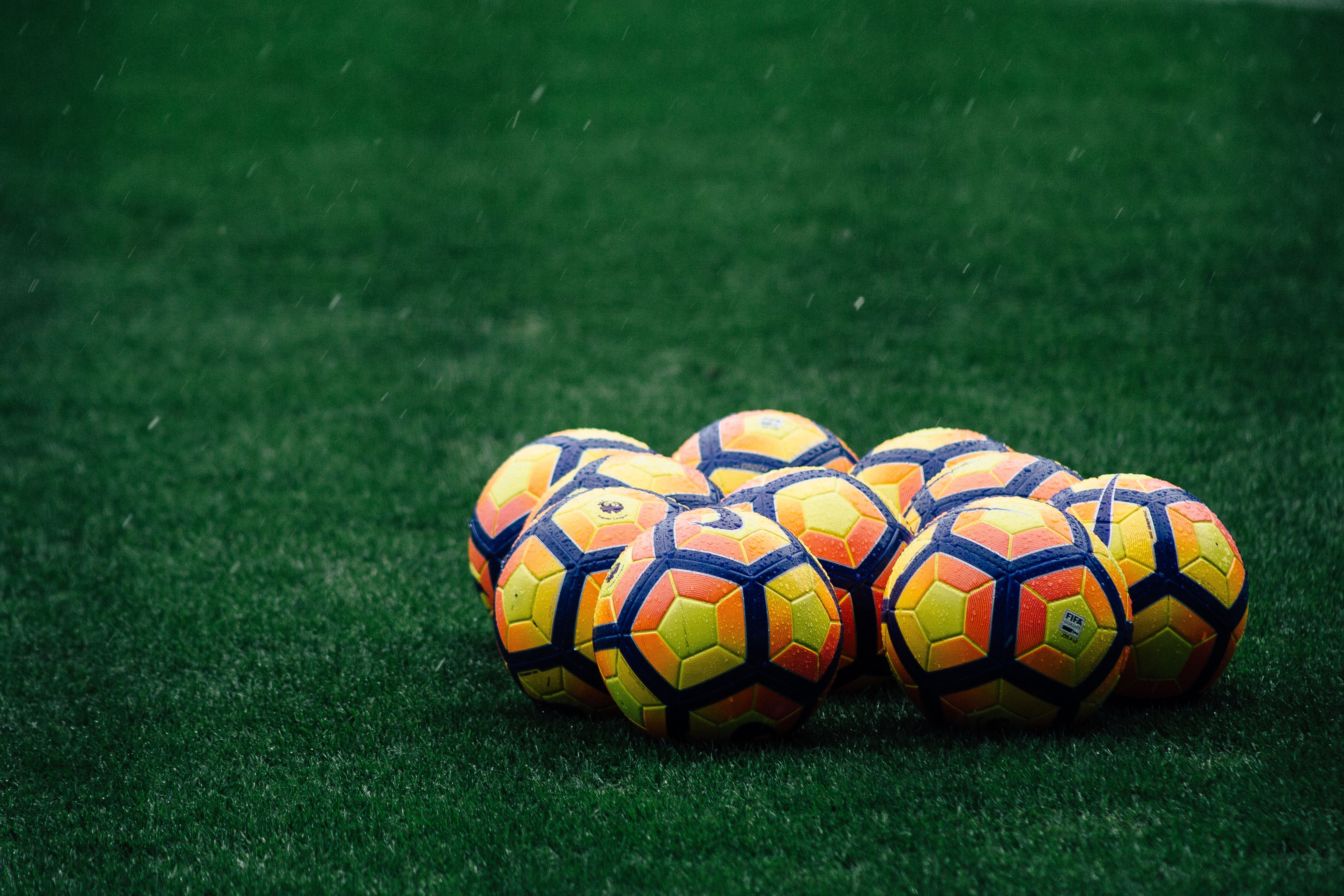Some of you may be asking, what is the point in listing the top five Premier League footballs by design? However, as a football fan, the designs of footballs is surprisingly interesting.
Recently, the Premier League ball changed mid-season for the first time in its history. More eagle-eyed viewers would have noticed this change, and most of us have welcomed this blatant piece of commercial opportunity by the league with open arms and two feet keen to play with the new ball.
There’s something nostalgic about each season’s football and what it means to you. If your team did well in a certain season the ball from that year is likely to bring back good memories. Some balls you owned yourself and a glimpse of them takes you back to school games played with your friends on the playground or the school field.
1992-5 Mitre Pro Max
The First Division transformed into the Premier League in 1992. This new start was marked with a new ball, the Mitre Pro Max.
The ball might be basic, but it represents three things- the old, the new and our childhood.
The design is minimalistic and almost old fashioned. However, it perfectly encapsulates what football was about back then. Rotten pitches, physical challenges and really playing for the badge.
It also signifies a new, exciting beginning for English football as the Premier League became the best league in world, gaining the attention of all.
Lastly, just the sight of this ball brings back childhood trauma. Everyone has received this rock-hard ball to the face, stomach or leg. In the freezing winter months, there’s no pain like it. Despite this, it brings back brilliant memories of playing football as a child.
2000-2 Nike Geo Merlin
The start of the 21st Century saw Nike become the official manufacturer of the Premier League balls.
Their first ball, the Geo Merlin, doesn’t have the best design. Although, it is a major jump from the Mitre balls.
Mitre lacked the technology to produce advanced balls, whereas Nike launched the Geo Merlin as the roundest, fastest and most accurate ever. The balls GEO 1 technology also allowed it to fill up evenly when being pumped. I think it’s fair to say they don’t sting like the Mitre’s.
The balls design was also far more modern, introducing different shapes and colours. It set a precedent for how important the quality of footballs is and how they would develop in the future.
2004-6 Nike Total 90 Aerow 1
Different to Nike’s previous designs, the Aerow 1 took on a more basic pattern. It was a mostly white ball, with coloured circles and a large Nike logo. Although, basic, the design proves the term ‘less is more’.
Also featuring a bright yellow and purple version, the ball had some fantastic colours.
In the two seasons the ball was used, Chelsea won back-to-back titles, winning the league the first season with a record-breaking 95 points. This was the start of the legendary rivalry between Chelsea and Manchester United. Jose vs Sir Alex, Terry vs Ferdinand, Drogba vs Rooney.
The league also started to become much more skillful and tactical. So many readers will remember this era of the Premier League and the Aerow 1 represents that perfectly.
2009/10 Nike Total 90 Ascente
Since 2000, Nike’s production of Premier League balls had slowly improved overtime. Then the Nike Total 90 Ascente came.
Previous to the Ascente, balls were basic in design and colour. This ball had a background of intricate grey and white patterns, with further designs in blue and orange. The minimal background made the other colours ‘pop’, while bringing focus to the complete design.
Every ball since the Ascente has featured an array of colours and designs, having laid the way for their styles and production.
2011/12 Nike Seitiro
The Seitiro captures the essence of both traditional and modern designs to create the best ball in Premier League history.
The white background bring a focus to the arrow like shapes, accentuating the orange and blue colour scheme. The tinges of orange also give reminders of flames shooting through the air. As a football player, it just invites you to hit the ball on the volley from 40-yards out.
It is a brilliant design and one that hasn’t yet been replicated in football.
By Harry Hughes

